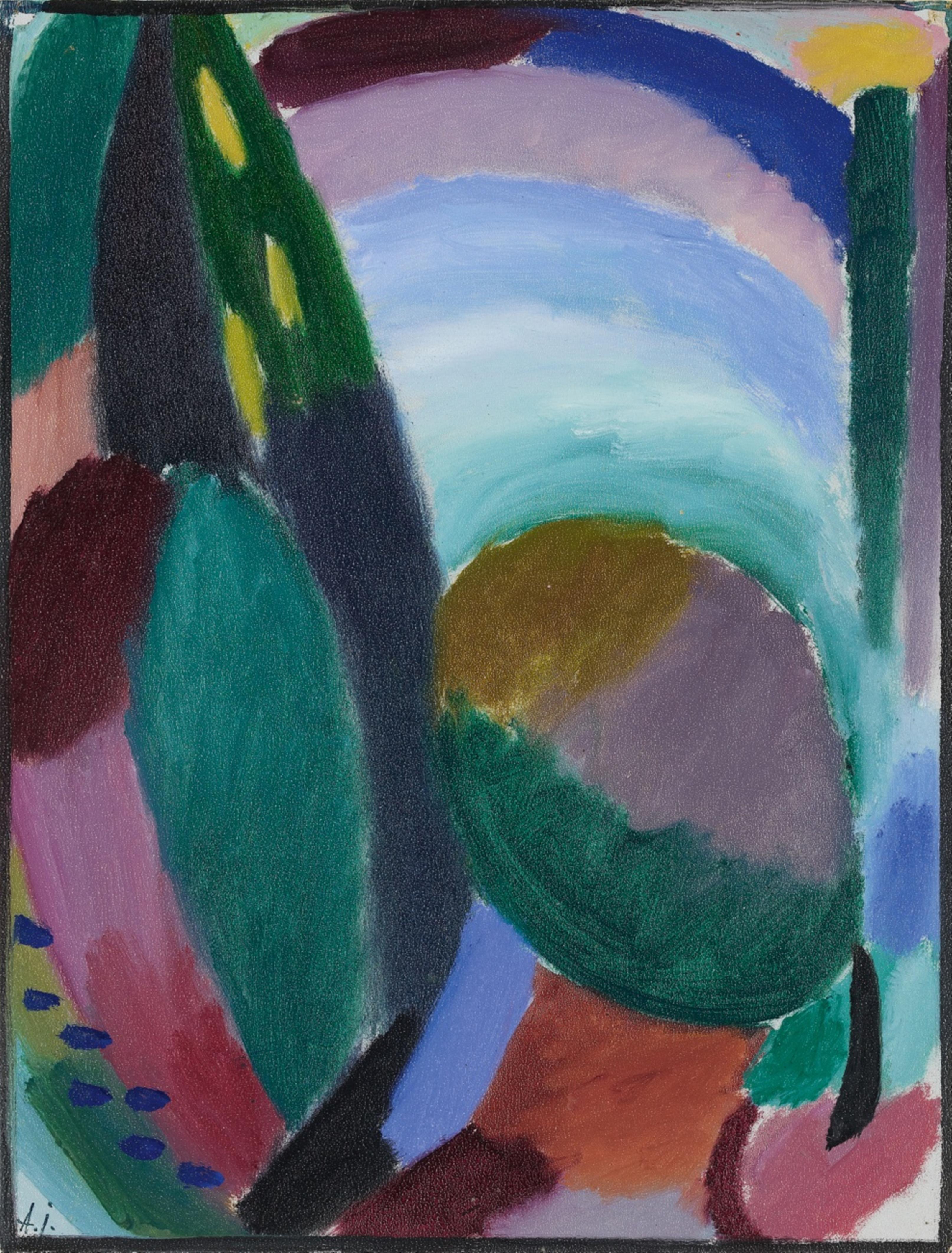Alexej von Jawlensky
Variation
Circa 1916
Oil on light card, mounted on card support 32.6 x 25 cm (45 x 36.5 cm) Framed under glass. Monogrammed 'A.J.' in blue lower left. - As is quite often the case with the "Variationen", work process-related drawing pin holes to the upper corners, partially old colour additions to the margins.
“I now began to search for a new path in art. It was a major task. I understood that I did not have to paint what I saw, not even what I felt, but only that which lived within me, in my soul. To put it in symbolic terms, it is like this: I felt within myself, within my breast, the keyboard of an organ and I had to make it resonate. And the nature that was in front of me served me only as a prompter. And that was a key that unlocked this organ and made it resonate. In the beginning it was very difficult. But little by little, it became easy for me to use colours and forms to find what was within my soul.” (letter from Alexei von Jawlensky to Jan Verkade, 12 June 1938, cited in Clemens Weiler, Alexej von Jawlensky, der Maler und Mensch, Wiesbaden 1955, pp. 39 ff.)
The “Variationen über ein landschaftliches Thema” form an exceptional group of works within Alexej von Jawlensky's oeuvre. The majority of them were created in St Prex, next to Lake Geneva, where the artist and Marianne von Werefkin had fled together immediately after the outbreak of the war in 1914. With his easel placed directly next to the window, Jawlensky created variation after variation of the view from this point in his home down on to the park path that led to the lake.
As landscape and window paintings, Jawlensky's variations stand in a long art historical tradition. At the same time, however, they do not adhere to a mimetic concept; instead, in their diversity, they indicate the painter's sentiments within the specific circumstances of his life. Jawlensky's late reflection regarding these works powerfully testifies to his synaesthetic concept of art and symbolically illustrates his intensive occupation with that anti-materialistic fundamental attitude between mysticism, religion and spiritualism which also definitively shaped the work of his contemporary Wassily Kandinsky. The transitions between the red and blue tones that dominate in the lower section of this variation may be understood within the context of the reception of Arnold Schoenberg's ideas through members of the “Blauer Reiter”. Impressed by his compositional considerations regarding dissonance and consonance, Jawlensky, Kandinsky and Marc repeatedly attempted to transfer Schoenberg's ideas to painting. In the present variation, Jawlensky has arranged the individual colours in a harmonious balance and caused them to resonate with a rarely seen intensity.
Catalogue Raisonné
M. Jawlensky/Pieroni-Jawlensky/Jawlensky Bianconi, Vol. IV Addenda Vol. II, 2288 with colour illus. p. 426
Certificate
With a photo-certificate by Maria Jawlensky/Lucia Pieroni-Jawlensky/Angelica Jawlensky Bianconi, Alexej von Jawlensky Archiv Locarno, dated 20 February 1997
Provenance
Acquired in the studio of the artist; Maria Scheffer, Munich (1921); Private possession, Rhineland; Lempertz, Cologne, Moderne Kunst 7 June 1997, lot 1262; Private collection

